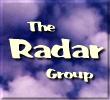











Last update
5 Apr 2001

This page is maintained by
Mark Fielding
All content Copyright © The University of Reading unless otherwise stated.

Cloud Characteristics
Cloud Characteristics (or C2) is an ongoing project funded by the European Space Agency that supports the continuous observations made by the 94-GHz Galileo radar and 905 nm lidar ceilometer at Chilbolton. The objectives are to
 Gain a better understanding of the processes
and properties of clouds at the microphysical level.
Gain a better understanding of the processes
and properties of clouds at the microphysical level. Use the long observational datasets to
characterise cloud properties on a statistical basis.
Use the long observational datasets to
characterise cloud properties on a statistical basis. Develop algorithms to remotely retrieve cloud
properties.
Develop algorithms to remotely retrieve cloud
properties. Evaluate the potential of these algorithms
from a spaceborne platform.
Evaluate the potential of these algorithms
from a spaceborne platform.Cloud Characteristics I
The first C2 campaign has recently been completed. Most of the work was done using the 3 months of data taken by the 35 and 94 GHz radars during the winter of 1998/1999. Take a look at the quicklooks page. One of the studies involved using the radar and lidar data together to produce a climatology of cloud fraction that could be compared directly with the values held by the ECMWF model; details can be found here. The data has also been used to quantify the effect of cirrus inhomogeneity on emmissivity
The data were also analysed to examine some of the potential problems that might face a future spaceborne radar and/or lidar. We have found that:
 Drizzle is present in more than half the
(predominantly continental) stratocumulus sampled over Chilbolton. It
has been shown previously using aircraft data that drizzle is present
in nearly all marine stratocumulus. The consequency of this is that
stratocumulus is detectable for a spaceborne radar but that radar
reflectivity is no longer correlated with liquid water content.
Drizzle is present in more than half the
(predominantly continental) stratocumulus sampled over Chilbolton. It
has been shown previously using aircraft data that drizzle is present
in nearly all marine stratocumulus. The consequency of this is that
stratocumulus is detectable for a spaceborne radar but that radar
reflectivity is no longer correlated with liquid water content. The cloud base of ice clouds as measured by
radar and lidar agrees to within 200 m 73% of the time and to within
400 m 95% of the time (using the sensitivities of the proposed
spaceborne instruments). It had previously been supposed that the two
instruents would see a very different cloud base which would have
important implications for radiation.
The cloud base of ice clouds as measured by
radar and lidar agrees to within 200 m 73% of the time and to within
400 m 95% of the time (using the sensitivities of the proposed
spaceborne instruments). It had previously been supposed that the two
instruents would see a very different cloud base which would have
important implications for radiation. Only around 3% of `radiatively significant'
ice clouds (with an optical depth greater than 0.05) would not be
seen by the spaceborne radar, at least at the mid-latitudes.
Only around 3% of `radiatively significant'
ice clouds (with an optical depth greater than 0.05) would not be
seen by the spaceborne radar, at least at the mid-latitudes.Cloud Characteristics II
The 94-GHz radar now measures real-time Doppler velocity, and also has the capability to take regular time-series which can be used to calculate the full Doppler spectrum of fall velocities. Simultaneous Doppler spectra have been measured at 35 and 94 GHz, and the difference between the two should provide information on size in cirrus because of the effect of Mie scattering. Work is also in progress to develop techniques to identify the occurrence of mixed-phase clouds.